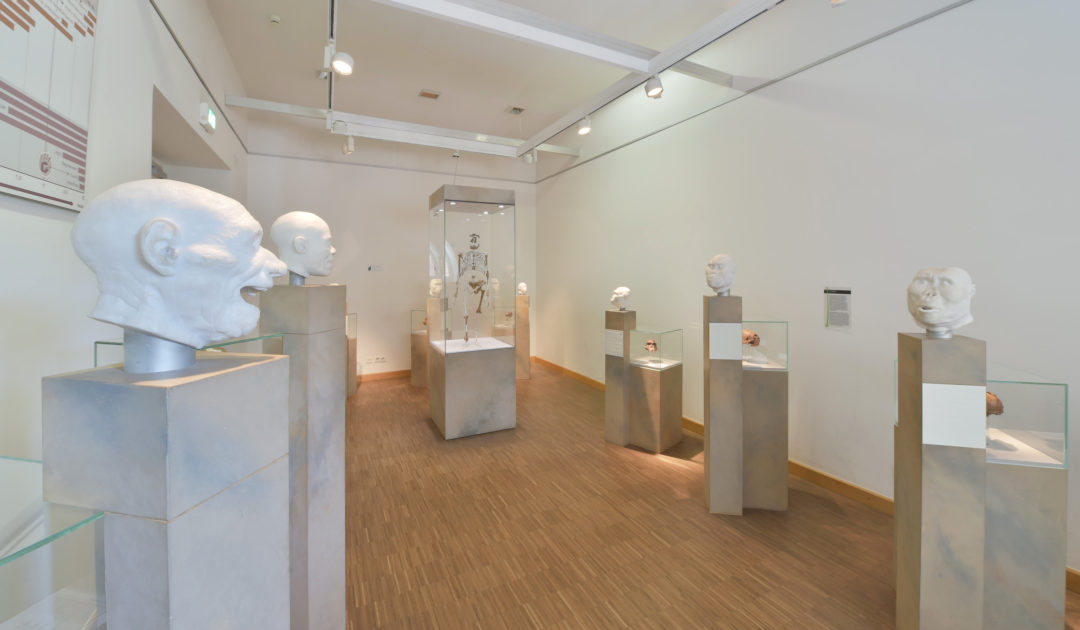Permanent exhibition
Human Evolution
Homo sapiens, humankind in its present form, has been around for some 200,000 years. The history of research into early primates began in 1856 with the discovery of Neanderthal Man in Neanderthal near Mettmann. “Human genealogy” is a subject of constant and ongoing discussion, one reason being the very small number of human fossil finds, many of which are just single bones or teeth.
The oldest remains by far of our human ancestors have been found in Africa, the presumed cradle of humankind. Key milestones in human evolution are erect posture, the enlargement of the brain, the use of tools, the discovery of fire, and early forms of artistic expression. An especially celebrated forerunner of homo sapiens is Australophithecus afarensis, roughly 1 metre tall and better known as “Lucy.” The approximately three-million-year-old skeleton from East Africa provides early evidence of erect posture.
In addition to skulls, the exhibition also includes reconstructions of the heads of our hominid ancestors that visitors can both view and touch.
